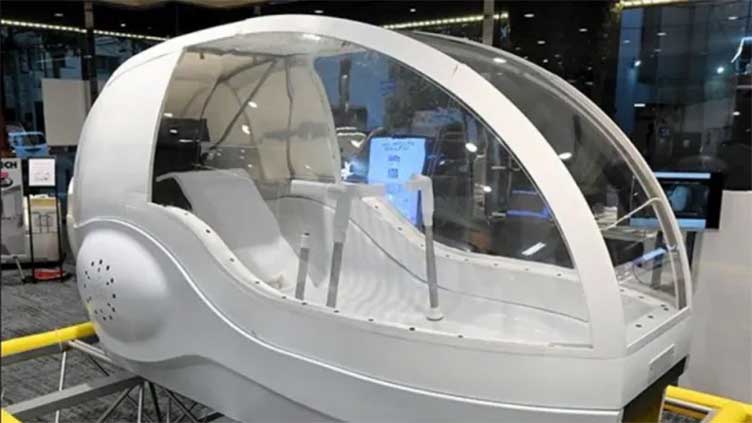'Human washing machine' doesn't need soap, can read your mood

Technology
An AI system determines whether the user is calm or excited
(Web Desk) - A futuristic ‘human washing machine’ could have you ditching your shower for good.
Engineers are developing the bath of the future that can read your mood and doesn't need soap to get you clean.
Japanese boffins have what has been dubbed the "human washing machine".
Designed almost like a fighter plane cockpit - the egg-shaped bubble was unveiled by Science Co.
It is due to be officially unveiled at the Osaka Kansai Expo in April.
The "human washing machine of the future" was based on a design originally from the 70s.
But the modern redesign is due to re-invite the shower experience with the help of AI.
The device partially fills with hot water when the bather sits in the seat in the centre.
Sensors embedded in the seat measure the person’s pulse and other biological data to ensure the bather is washed at an appropriate temperature.
At the same time, an AI system determines whether the user is calm or excited.
This is used to project images on the inside of the transparent cover to help the person feel refreshed.
Designers have boasted a wash and dry cycle takes 15 minutes.
The company is planning to allow users to come and take a spin in the new gadget before it goes to market.
Company chairman, Yasuaki Aoyama, said: “We’re about 70 percent there. We plan to offer 1,000 general visitors an opportunity to use it during the expo.”
He also added that seven to eight people will be able to experience a “wash-and-dry” job each day.
For anyone wanting a wash in the machine, special reservations to try it out are now on their website.
The firm however cannot take full credit for the concept.
In 1970, the original machine debuted by Sanyo Electric Co. failed to catch on.
Their version was called "Ultrasonic Bath", and had a few notable differences from the 21st century model.
The bath emitted ultrasound waves and released plastic balls to massage the person's body
There was also no technology to measure what the temperature should be, so it automatically filled with hot water.
At the time, the design sent waves through the country, even if people weren't keen to have one in their own home.
Yasuaki saw the design then, and used it as inspiration for the upcoming version.


